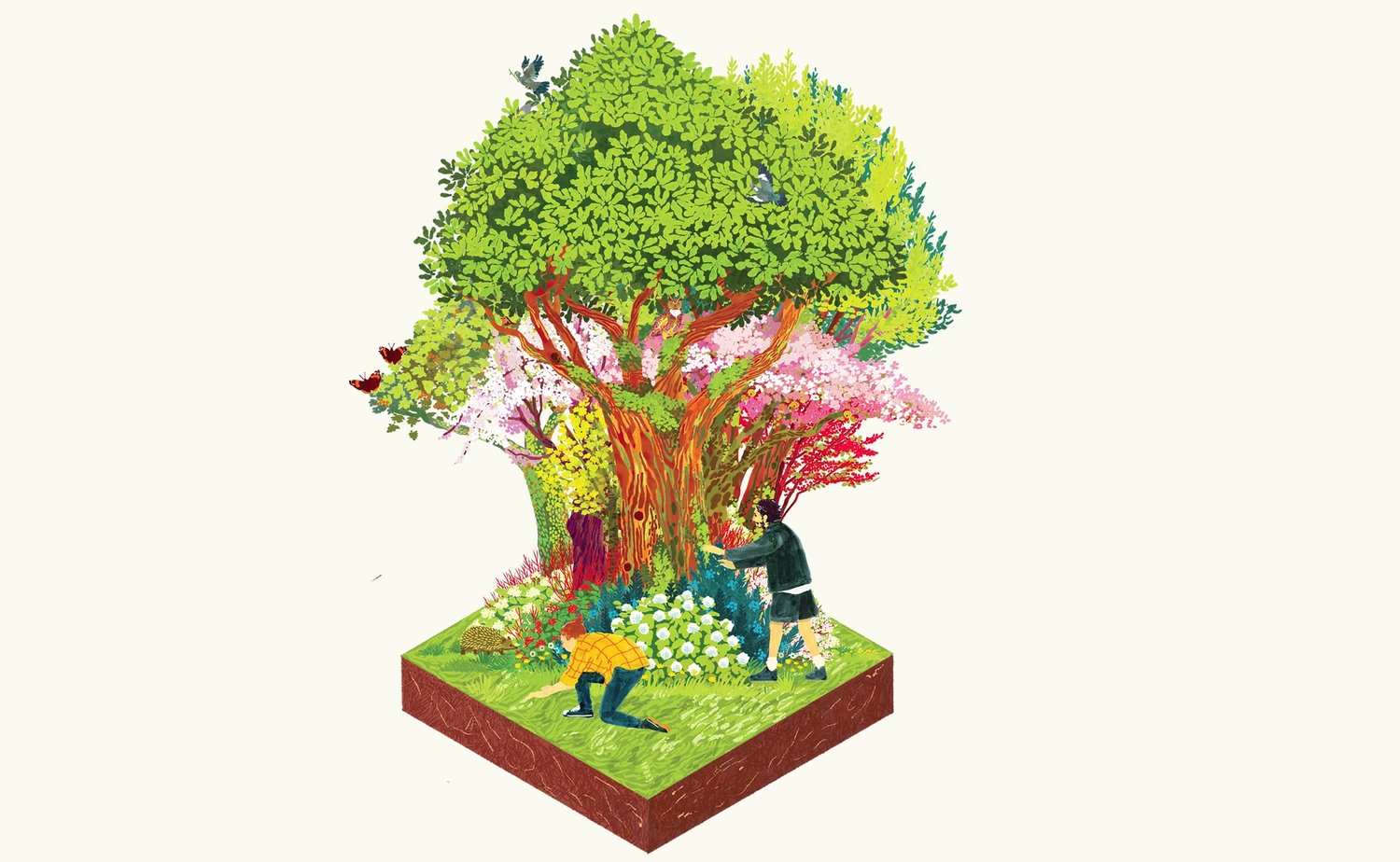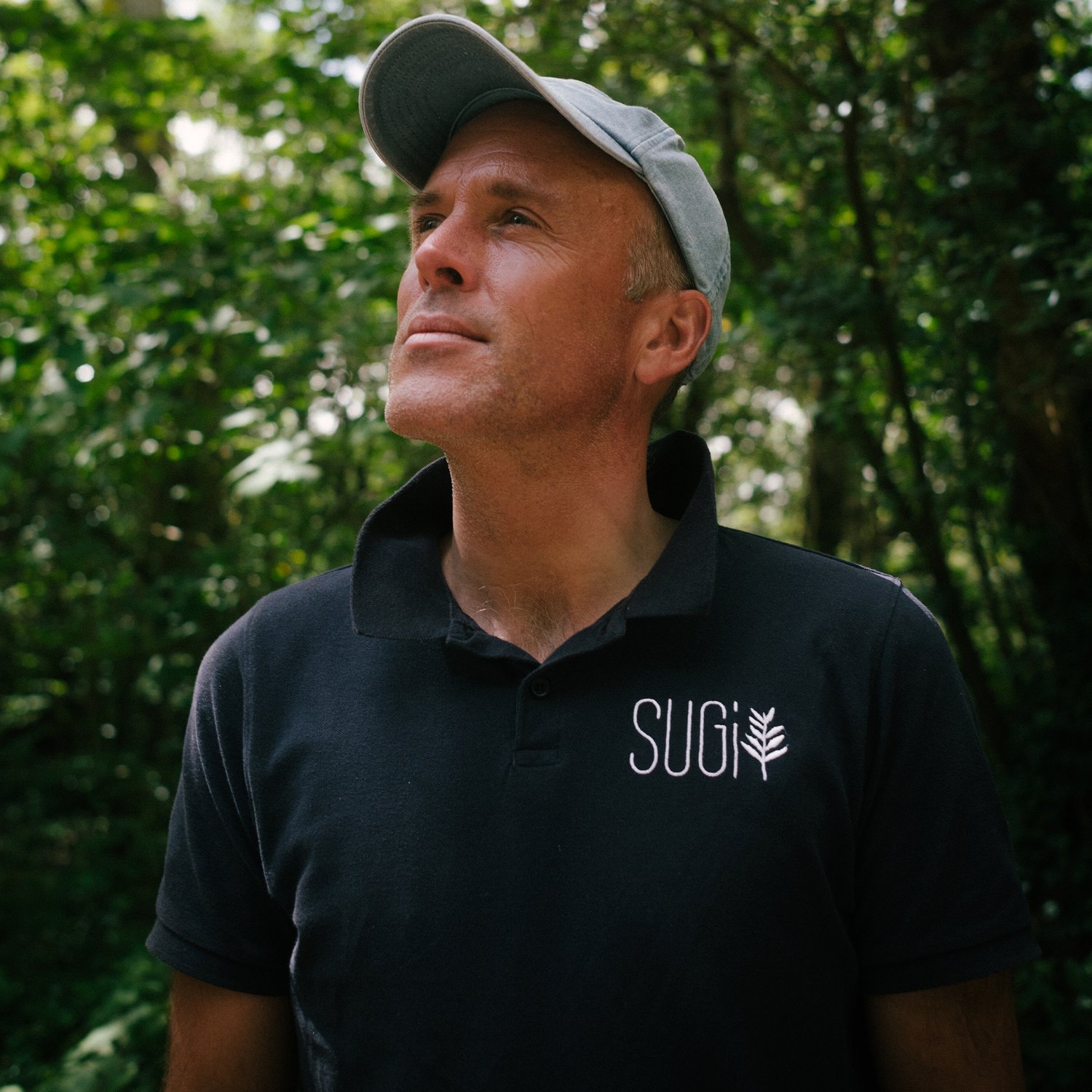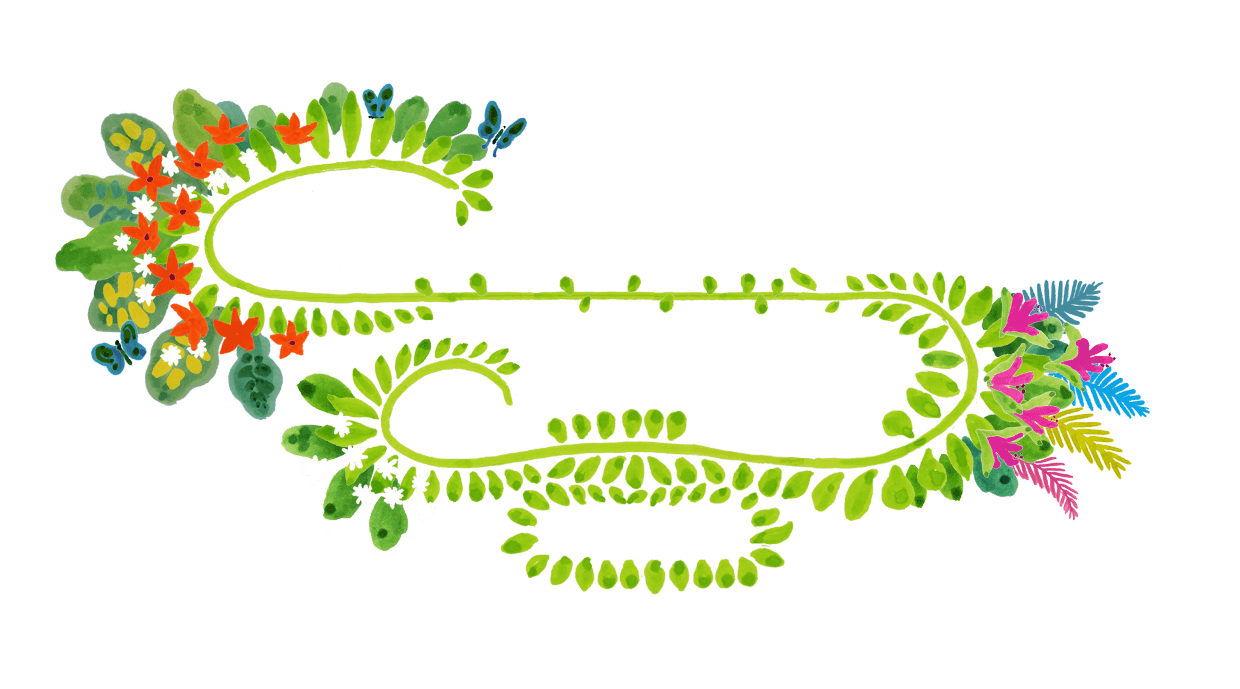
Insight
The Miyawaki Method for Creating Forests
What is the Miyawki Forest Technique?
SUGi collaborates with a global network of forest makers to build biodiversity and regenerate urban areas by planting pocket forests using the acclaimed Miyawaki method.
This method of afforestation was developed by the Japanese botanist and plant ecology expert Professor Akira Miyawaki, and draws inspiration from nature’s ecosystems to create 100% organic, dense and diverse pioneer forests in as little as 20-30 years.
Miyawaki forests grow 10x faster, are 30 x denser and contain 100x more biodiversity. Since they’re quick to establish, maintenance-free after the first two-to-three years, and can be created on sites as small as 3 sq m, Miyawaki forests are viable solutions for cities looking to rapidly build climate resilience.

But what makes Miyawaki forests unique?
The Miyawaki method mimics the way a forest would recolonise itself if humans stepped away. Only native species that would occur naturally in that area without humans, given the specific climate condition, are planted. Indigenous plant species have spent thousands of years adapting to their local environment to create a supporting ecosystem, so planting them doesn’t just reinstate this biodiversity – it builds a site that’s more responsive to climate change.
The Miyawaki method isn’t just unique because it restores native habitats using native trees; the afforestation principles are based on an understanding of how these species would interact in a natural forest. You plant a diverse mixture of trees close together to maximise density and create balance. Nature doesn’t thrive in grids of 1.5m; seeds drop from trees randomly to stimulate growth, or fallen trees open up clearings to the sun. As the closely planted saplings have to compete for light, which only shines on them from above, they shoot upwards very fast instead of sideways.
Sometimes less is more, but in this instance, planting a huge variety of native trees close together means an increase in biodiversity. The denseness of growth provides a greater amount of forage for pollinators and refuge for birds. More canopy cover shades out weeds and creates a cool home for insects, plus the increased leaf litter builds fertility and life in the soil. Also, if you have a variety of tree species, you have others to step in if one succumbs to disease.
“Within a forest, biodiversity means balance, Birds control pests, insects pollinate plants, and beneficial fungi keep the trees healthy. Every organism has a role to play, and all these roles interact. And if you build a healthy, biodiverse habitat that can look after itself, it becomes self-sustaining. You can step away and let nature get to work."
Lead SUGi Forest Maker - James Godfrey-Faussett

SUGi follows these four stages when planting a Miyawaki forest:

1) Identifying Potential Natural Vegetation
When planting a Miyawaki forest, the first step is to identify the native vegetation best suited to the area being planted, termed Potential Natural Vegetation. To establish this, our forest makers do intensive research, often involving the indigenous community. They look to see what is growing locally, in protected areas or ancient old-growth forests.
Forests are multi-layered, and as the Miyawaki method mirrors nature, we identify and plant four layers of vegetation, building a resilient green wall of canopy trees, trees, sub-trees and shrubs. We select up to 40 different species to create balance and maximise density.
2) Preparing the soil
The second step when planting a Miyawaki forest is soil preparation. Since SUGi focuses on rewilding nature-deprived areas, the soil is often degraded, compacted, waterlogged or bacteria-dominant. However, trees need fungi-dominant, soft and crumbly soil, so their roots can establish faster and have better access to nutrients.
Our forest makers work the soil once to restore the missing biology and put it on the path to becoming oxygenated, fertile and self-sustaining. Compost tea is also added to the earth as it’s turned; this contains strains of beneficial fungi (known to interact with the specific tree species) and a stimulant, such as molasses or liquid seaweed, to give the fungi fuel to grow.
3) Planting the saplings
Once the soil is prepared, SUGi Pocket Forests are planted with the help of the community. We plant three to four saplings per square metre in a random manner that mirrors how natural forests grow. We choose to plant young saplings, as they’re more adaptable and can form symbiotic relationships with mycorrhizal fungi in the soil far quicker than an older tree.
The denseness of a Miyawaki forest isn’t just great for creating biodiversity; it also increases carbon capture, pollution filtration and produces an area more resilient to flooding and landslides. Increased canopy cover reduces the amount of rainfall that hits the ground, increases shade and promotes cooling. Not to mention the green-wall effect of the multi-layered trees, which acts as a shield if there’s ever a storm surge.
4)Mulching the forest
Once you’ve planted the saplings, the final step is to apply a compost tea and mulch heavily using straw. The mulch protects the soil and retains moisture. Species such as earthworms, beetles and other insects feed from the top-down, building soil fertility by pulling the mulch into the ground for it to be broken down by microbes.
As mulching helps the soil retain moisture, you do not have to do as much watering. The more fertile the soil, the more water it holds. Miyawaki forests only need to be maintained for the first two-to-three years. After that, you can stop weeding and mulching and let the forest get on with it.
Where can you plant a Miyawaki forest?
Miyawaki forests do not require a huge amount of space; you can plant them almost anywhere in sites as small as three square meters. Even at this size, they fast become a habitat for countless species and offer multiple ecosystem services all at once. These pocket forests are perfect for the fast regeneration of urban areas, and SUGi’s forest makers have transformed school playgrounds, city parks and urban rivers from grey to green.
We need the forest around us wherever we are, and instead of going out into the wilderness, the Miyawaki method brings the wild to you. SUGi Pocket Forests can be created at the front door of a community, and the social benefits of this to mental and physical health are as important as the ecological and environmental.
The Miyawaki method is community-based and people-centred and can be used to reclaim and reimagine public space for the benefit of people and the planet. For SUGi founder Elise Van Middelem, it’s all about creating “pockets of hope.”
Why do SUGi plant pocket forests using the Miyawaki method?
SUGi aims to restore ecosystems and build biodiversity. The Miyawaki method enables us to do precisely that, creating a flourishing forest habitat that provides a range of social, environmental and ecological benefits beyond just capturing carbon.
Miyawaki forests purify the air, manage water, regulate the climate, create oxygen, build soil and biodiversity, and provide food, medicine, shelter and joy to all those connected to it.





